Core Research Foci
Complex organic mixtures: Emissions, composition, evolution, and new methods for detailed chemical speciation
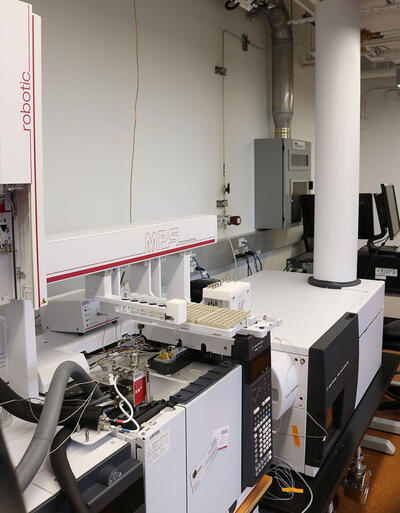 The Gentner Group’s research leverages detailed examinations of complexity — both chemical and spatiotemporal — which are propelled by advancements in sampling and analytical capabilities. They aim to deconvolve complex mixtures of traditional, understudied, and unknown organic compounds across the range of volatile, intermediate-volatility, semi-volatile, and low-volatility organic compounds (VOCs, IVOCs, SVOCs, LVOCs). While these multi-faceted mixtures of hydrocarbons and functionalized compounds are often challenging to measure, they have major impacts as primary emissions or as reactive precursors to secondary organic aerosol (SOA) and ozone formation.
The Gentner Group’s research leverages detailed examinations of complexity — both chemical and spatiotemporal — which are propelled by advancements in sampling and analytical capabilities. They aim to deconvolve complex mixtures of traditional, understudied, and unknown organic compounds across the range of volatile, intermediate-volatility, semi-volatile, and low-volatility organic compounds (VOCs, IVOCs, SVOCs, LVOCs). While these multi-faceted mixtures of hydrocarbons and functionalized compounds are often challenging to measure, they have major impacts as primary emissions or as reactive precursors to secondary organic aerosol (SOA) and ozone formation.
New analytical developments in the Gentner Group include a focus on offline high-resolution mass spectrometry methods with gas and liquid chromatography, including tandem mass spectrometry (i.e., MS/MS), to elucidate the chemical composition of complex organic mixtures in the gas- and particle-phase, their associated chemical-physical processes, and potential impacts. These have been applied by the group to study the emissions and chemical transformations of complex mixtures, and their composition indoors as well as outdoors in urban areas and downwind regions that have a mix of anthropogenic and biogenic influences.
Selected example publications:
- Khare et al. (2022) “Ammonium adduct chemical ionization to investigate anthropogenic oxygenated gas-phase organic compounds in urban air,” Atmospheric Chemistry and Physics, doi: 10.5194/acp-2022-421.
- Joo et al. (2024) “Secondary Brown Carbon Formation from Photooxidation of Furans from Biomass Burning” Geophysical Research Letters, 51, e2023GL104900, doi: 10.1029/2023GL104900.
- J.C. Ditto, J. Machesky, and D.R. Gentner (2022) “Analysis of Reduced and Oxidized Nitrogen-Containing Gases and Particles at a Coastal Site,” Atmospheric Chemistry and Physics, doi: 10.5194/acp-2021-791.
- J.C. Ditto et al (2020) “Nontargeted Tandem Mass Spectrometry Analysis Reveals Diversity and Variability in Aerosol Functional Groups across Multiple Sites, Seasons, and Times of Day,” Environmental Science & Technology Letters, 7(2), 60-69, doi: 10.1021/acs.estlett.9b00702.
- J.C. Ditto et al (2019) “Effects of Molecular-Level Compositional Variability in Organic Aerosol on Phase State and Thermodynamic Mixing Behavior,” Environmental Science and Technology, 53(22), 13009-13018, doi: 10.1021/acs.est.9b02664.
- J.C. Ditto et al (2018) “An Omnipresent Diversity and Variability in the Chemical Composition of Atmospheric Functionalized Organic Aerosol,” Communications Chemistry, 1(75), doi: 10.1038/s42004-018-0074-3.
- J.C. Ditto et al (2021) “Atmospheric Evolution of Emissions from a Boreal Forest Fire: The Formation of Highly-Functionalized Oxygen-, Nitrogen-, and Sulfur-Containing Compounds,” Atmospheric Chemistry and Physics, doi: 10.5194/acp-21-255-2021.
- J.C. Ditto, J. Machesky, and D.R. Gentner (2022) “Analysis of Reduced and Oxidized Nitrogen-Containing Gases and Particles at a Coastal Site,” Atmospheric Chemistry and Physics, doi: 10.5194/acp-2021-791.
- P. Khare et al (2019) “Advances in offline approaches for trace measurements of complex organic compound mixtures via soft ionization and high-resolution tandem mass spectrometry,” Journal of Chromatography A, 1598, 163-174. doi: 10.1016/j.chroma.2019.03.037.
- R. Sheu et al (2018) “Advances in offline approaches for chemically speciated measurements of trace gas-phase organic compounds via adsorbent tubes in an integrated sampling-to-analysis system,” Journal of Chromatography A, 1575, 80-90, doi: 10.1016/j.chroma.2018.09.014.

Urban air quality and emissions from non-traditional sources
Research in the Gentner Group studies urban air quality in several ways:
Emissions of primary pollutants and reactive gas-phase organic compounds from traditional and understudied sources, including energy-related emissions and the increasing influence of non-traditional sources on urban air quality:

The team’s work includes a wide range of sources of primary pollutants and reactive precursors that are relevant for urban air quality. Yet, for reactive gas-phase organic carbon, research shows that non-combustion related sources of VOCs-SVOCs are becoming increasingly important for urban air quality (i.e., SOA, ozone) with the successful mitigation of emissions from motor vehicles and other combustion sources in U.S. cities. Our research on this topic has included a series of laboratory and field studies to examine emissions from a diverse array of understudied sources, including volatile chemical products (VCPs) present in consumer or commercial products, used in associate processes, or off-gassing from materials (e.g., asphalt-related materials). These emissions can be classified into three pathways: (i) solvent evaporation, (ii) volatilization of solutes or lower-volatility components of products/materials, and (iii) off-gassing of compounds not present in product formulations that can include degradation by-products (see Khare & Gentner, 2018).  Ongoing and upcoming work includes studies on air quality in New York City and downwind in Connecticut as part of NOAA’s AEROMMA ground activities, the NSF-funded ASCENT network, and the LISTOS study (e.g., in NYC at the ASRC (see photo) and at the Yale Coastal Field Station).
Ongoing and upcoming work includes studies on air quality in New York City and downwind in Connecticut as part of NOAA’s AEROMMA ground activities, the NSF-funded ASCENT network, and the LISTOS study (e.g., in NYC at the ASRC (see photo) and at the Yale Coastal Field Station).
Enabling high spatiotemporal resolution studies on pollutant emissions, concentrations, and human exposure through the development of cost-effective monitors for distributed networks:
The Gentner Group also aims to advance spatiotemporal measurement capabilities, including developing sufficiently accurate, and field-deployable monitors with minimal infrastructure for (i) a range of criteria pollutants and separately for (ii) VOCs-IVOCs via vacuum gas chromatography with air (Skog et al, 2019).

As part of the SEARCH Center at Yale, our multipollutant monitors with sensors for particulate matter and key gas-phase criteria pollutants with an on-board calibration system (Buehler et al, 2021) were developed and deployed in a large urban air quality network in Baltimore, MD over a multi-year period to evaluate pollutant spatiotemporal dynamics, the determining factors driving spatiotemporal variability, and their implications.
- Hass-Mitchell et al. (2024) “Increasing Contributions of Temperature-Dependent Oxygenated Organic Aerosol to Summertime Particulate Matter in New York City,” ACS ES&T Air, doi: 10.1021/acsestair.3c00037.
- Cao et al. (2023) “Policy-related gains in urban air quality may be offset by increased emissions in a warming climate,” Environmental Sciences and Technology, 57 (26), 9683–9692, doi: 10.1021/acs.est.2c05904.
- Kim et al. (2024) “Real-world observations of ultrafine particles and reduced nitrogen in commercial cooking organic aerosol emissions” Atmospheric Chemistry and Physics, 24, 1281–1298, doi: 10.5194/acp-24-1281-2024.
- P. Khare & D.R. Gentner (2018) “Considering the future of anthropogenic gas-phase organic compound emissions and the increasing influence of non-combustion sources on urban air quality,” Atmospheric Chemistry and Physics, 18 (8), 5391-5413, doi: 10.5194/acp-18-5391-2018.
- P. Khare et al (2020) “Asphalt-related Emissions are a Major Missing Non-Traditional Source of Secondary Organic Aerosol Precursors,” Science Advances, 6(36), doi: 10.1126/sciadv.abb9785.
- H. Rogers, J.C. Ditto, D.R. Gentner (2020) “Evidence for impacts on surface-level air quality in the Northeastern U.S. from long-distance transport of smoke from North American fires during LISTOS 2018,” Atmospheric Chemistry and Physics, 20 (2), 671-682, doi: 10.5194/acp-20-671-2020.
- B.C. McDonald et al (2018) “Volatile chemical products emerging as largest petrochemical source of urban organic emissions,” Science, 359 (6377), 760-764, doi: 10.1126/science.aaq0524.
- C. Buehler et al (2021) “Stationary and Portable Multipollutant Monitors for High Spatiotemporal Resolution Air Quality Studies including Online Calibration,” Atmospheric Measurement Techniques, doi: 10.5194/amt-14-995-2021.
- M. Levy Zamora et al (2019) “Field and Laboratory Evaluations of the low-cost Plantower Particulate Matter Sensor,” Environmental Science & Technology, 53(2), 838–849, doi: 10.1021/acs.est.8b05174.
- K.M. Skog et al (2019) “Compact, Automated, Inexpensive, and Field-deployable Vacuum-Outlet Gas Chromatograph for Trace Concentration Gas-phase Organic Compounds,” Analytical Chemistry, 91(2), 1318–1327, doi: 10.1021/acs.analchem.8b03095.
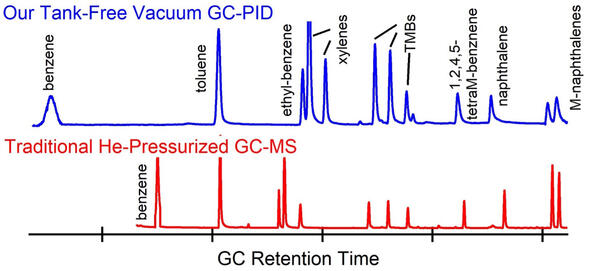
Indoor air quality: Emissions, composition of complex mixtures, dynamic organic reservoirs, and implications for human health
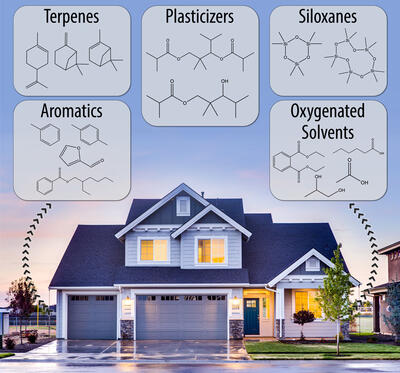 The Gentner Group’s research has studied the chemical complexity of the indoor environment, its reactivity, health implications, and interconnectivity with outdoor air. This includes emissions from non-traditional sources and reservoirs of VOCs-SVOCs into the indoor environment, such as volatile chemical products (VCPs), material off-gassing (e.g., furfural from wood), and thirdhand tobacco smoke off-gassing from people and materials. It also highlights the fluxes of VOCs-IVOCs from indoors to outdoor air, where it is a substantial contributor to ambient concentrations of VOCs-SVOCs. They also pursue multidisciplinary work on the impacts of energy-related decisions (e.g., building efficiency measures) on both indoor and outdoor air quality through their effects on emissions and human exposure across indoor and outdoor spaces.
The Gentner Group’s research has studied the chemical complexity of the indoor environment, its reactivity, health implications, and interconnectivity with outdoor air. This includes emissions from non-traditional sources and reservoirs of VOCs-SVOCs into the indoor environment, such as volatile chemical products (VCPs), material off-gassing (e.g., furfural from wood), and thirdhand tobacco smoke off-gassing from people and materials. It also highlights the fluxes of VOCs-IVOCs from indoors to outdoor air, where it is a substantial contributor to ambient concentrations of VOCs-SVOCs. They also pursue multidisciplinary work on the impacts of energy-related decisions (e.g., building efficiency measures) on both indoor and outdoor air quality through their effects on emissions and human exposure across indoor and outdoor spaces.- Sheu et al. (2022) “Deposited particulate matter and human lung lining fluid are prominent reservoirs for offgassing third hand tobacco smoke emissions” (2022) Environmental Science: Atmospheres, doi: 10.1039/d1ea00107h.
- R. Sheu et al (2021) “Evaluating indoor air chemical diversity, indoor-to-outdoor emissions, and surface reservoirs using high-resolution mass spectrometry,” Environmental Science and Technology, 55 (15), 10255–10267, doi: 10.1021/acs.est.1c01337.
- R. Sheu et al (2020) “Human transport of third hand tobacco smoke: A prominent source of hazardous air pollutants into indoor non-smoking environments” Science Advances, 6 (10), doi: 10.1126/sciadv.aay4109.
- A. Filippi et al (2022) “Environmentally persistent free radicals in indoor particulate matter, dust, and on surfaces,” Environmental Science: Atmospheres, doi: 10.1039/D1EA00075F.
- K. T. Gillingham et al (2021) “The Climate and Health Benefits from Intensive Building Energy Efficiency Improvements,” Science Advances, 7 (34), doi: 10.1126/sciadv.abg0947.

Air quality impacts of energy production and use
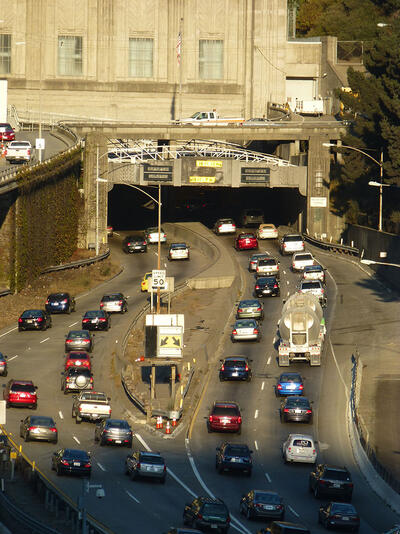 The team’s research examines energy-related emissions of organic compounds and criteria pollutants from motor vehicles, energy production/use, oil sands operations, and other combustion-related sources. Air quality, public health, climate, and the environment are often affected by energy production and use, though those impacts vary across pollutant types and spatial scales. Thus, our research includes examining the role of energy sources in the emissions of primary pollutants and the formation secondary pollutants to ultimately inform effective mitigation methods for primary and secondary organic aerosol on urban and regional scales. This includes examining their effect on urban air quality (e.g., SEARCH Center, NYC field studies), but also emissions from current and evolving energy technologies.
The team’s research examines energy-related emissions of organic compounds and criteria pollutants from motor vehicles, energy production/use, oil sands operations, and other combustion-related sources. Air quality, public health, climate, and the environment are often affected by energy production and use, though those impacts vary across pollutant types and spatial scales. Thus, our research includes examining the role of energy sources in the emissions of primary pollutants and the formation secondary pollutants to ultimately inform effective mitigation methods for primary and secondary organic aerosol on urban and regional scales. This includes examining their effect on urban air quality (e.g., SEARCH Center, NYC field studies), but also emissions from current and evolving energy technologies.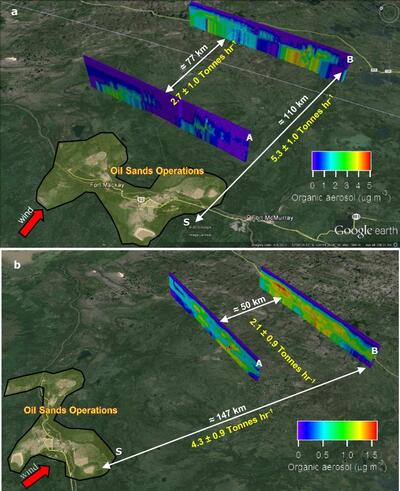 In collaboration with Environment and Climate Change Canada, the Gentner Group has been studying emissions of VOCs-SVOCs and SOA production from Oil sands operations in Alberta, Canada, which is increasingly relevant with potential extraction of U.S. oil sands in Utah on the horizon, and Venezuela pondering their own resources. This collaborative research on oil sands operations has spanned laboratory studies and 2 major flight campaigns (2013, 2018), which also included studies of nearby wildfire emissions (e.g., Ditto et al. ACP 2021) using the airborne collection of the Gentner Group’s adsorbent tubes and filters for detailed offline gas and particle chemical speciation of the emitted complex mixtures and their chemical transformations.
In collaboration with Environment and Climate Change Canada, the Gentner Group has been studying emissions of VOCs-SVOCs and SOA production from Oil sands operations in Alberta, Canada, which is increasingly relevant with potential extraction of U.S. oil sands in Utah on the horizon, and Venezuela pondering their own resources. This collaborative research on oil sands operations has spanned laboratory studies and 2 major flight campaigns (2013, 2018), which also included studies of nearby wildfire emissions (e.g., Ditto et al. ACP 2021) using the airborne collection of the Gentner Group’s adsorbent tubes and filters for detailed offline gas and particle chemical speciation of the emitted complex mixtures and their chemical transformations.- He et al. (2024) “Total organic carbon measurements reveal major gaps in petrochemical emissions reporting,” Science, 383, 426–432, doi: 10.1126/science.adj6233.
- D.R. Gentner et al (2017) “Review of urban secondary organic aerosol formation from gasoline and diesel motor vehicle emissions,” Environmental Science & Technology, 51 (3), 1074–1093, doi: 10.1021/acs.est.6b04509.
- J. Liggio et al (2016) “Oil Sands Operations Are a Major Source of Secondary Organic Aerosols,” Nature, 534, 91-94, doi: 10.1038/nature17646.
- B.D. Drollette, D.R. Gentner, D.L. Plata (2020) “Waste containment ponds are a major source of secondary organic aerosol precursors from oil sands operations,” Environmental Science and Technology, 54(16), 9872-9881, doi: 10.1021/acs.est.0c01735.
- K. T. Gillingham et al (2021) “The Climate and Health Benefits from Intensive Building Energy Efficiency Improvements,” Science Advances, 7 (34), doi: 10.1126/sciadv.abg0947.
- D.R. Gentner et al (2012) “Elucidating secondary organic aerosol from diesel and gasoline vehicles through detailed characterization of organic carbon emissions” Proceedings of the National Academy, 109 (45) 18318-18323, doi: 10.1073/pnas.1212272109.
- D.R. Gentner et al (2013) “Chemical composition of gas-phase organic carbon emissions from motor vehicles and implications for ozone production,” Environmental Science and Technology, 47 (20), 11837–11848, doi: 10.1002/jgrd.50825.
- D.R. Gentner et al (2014) “Emissions of organic carbon and methane from petroleum and dairy operations in California’s San Joaquin Valley,” Atmospheric Chemistry and Physics, 14(10), 4955-4978, doi: 10.5194/acp-14-4955-2014.
